5 Search Results for: Levermann
Rising seas culprit: ice or heat?
My attention was caught this week by a study that ascertained that thermal expansion accounts for a much greater share of sea level rise than previously thought. In fact, quite a few journalists got the message wrong. They thought the researchers had found that climate change was causing sea level rise twice as high as previously thought, which would have been quite a sensation. In fact, what the scientists actually found was that the amount of sea level rise that comes from the oceans warming and expanding has been underestimated and is probably about twice as much as previously calculated. There is a clear difference, which does not make the research – using the latest available satellite data – any less interesting.
Since two of the authors of the study are based here in Bonn, I was able to drop in on them and get them to explain their findings and the implications for our Living Planet programme. That will be broadcast in the near future. I also talked to Professor Anders Levermann from the Potsdam Institute for Climate Impact research on the phone, to get the research findings into context.
While physicists understand the workings of thermal expansion in the oceans in general, Levermann told me there is still a lot to learn about how the heat from excess warming is transported in the ocean, which is of key importance to understanding sea level rise, amongst other things. He says the new research will help make models of future sea level rise more accurate.
The Bonn researchers explained to me how satellite technology has made huge improvements in the collection of data, especially relating to the very deep areas of the ocean, which are very difficult to reach with conventional measuring gauges. Professor Kusche told me he would like to see the results of the study, published in the Proceedings of the National Academy of Sciences, being used by governments and coastal planners, as sea level rise will affect a large number of people living in coastal areas in the not-too-distant future. Warming seas are also linked to the occurence of storms, making the findings doubly relevant to those involved in protecting coastal areas.
From an Iceblogger point of view, I was keen to know whether the knowledge about the amount of sea level rise ascribed to thermal expansion had any implications for the role played by melting ice in raising sea level. If thermal expansion is accounting for a higher share of the sea level rise, is melting ice from Greenland and Antarctica accounting for less? I put that question first to Professor Kusche.
“We think that less of the sea level rise is coming from melting ice and glaciers, that’s actually true,” he answered. He said he and his colleagues had done a very thorough re-analysis of all the measurements available over the last 12 or 13 years, “and we are pretty sure that our numbers are correct”.
Rietbroek came in that that point: “Less, but not that much less. If you look at pubished literature and estimates of glacier melting, and try to add those up, you won’t be that far away from what we get. So the melting of glaciers is not that different from what’s been found previously”, he added.
I put the same question to Professor Levermann from PIK, who runs an ice sheet model for the Antarctic and was lead author of the IPCC chapter on sea level change. He explained to me that the various contributions to sea level rise are measured and modelled separately by different teams of experts in particular fields. The models all have a wide range of possible variation. He told me there is still some uncertainty in the distribution of the “sea level rise budget” between thermal expansion, ice sheet melt, mountain glacier melt and groundwater mining. While the latest findings on thermal expansion could potentially shift the relative contributions and are important for improving models to project future sea level rise more accurately, they do not change the validity of predictions relating to the amount of ice going into the ocean.
Ultimately, Levermann says, one of the IPCC statements with the highest certainty is that sea level will continue to rise for centuries to come. He was one of the authors of yet another study published in Nature Climate Change this past week, led by Peter Clark from the Oregon State University. It affirms that our greenhouse gas emissions today produce climate change commitments for many centuries to millenia. Unless the Paris climate agreement is put into practice asap and we reach zero or negative emissions, up to 20 percent of the world’s population will find itself living in areas that may have to be abandoned.
We are, indeed, living in the Anthropocene. Recently, I interviewed a scientist who found that we have already postponed the next ice age by 50,000 years through our fossil fuel emissions. The latest sea level study indicates that the next few decades offer a brief window of opportunity to avoid increased ice loss from Antarctica and “large-scale and potentially catastrophic climate change that will extend longer than the entire history of human civilization thus far”.
Ice paradoxes from pole to pole
Returning after a longish break with little access to news and data, there are several ice and snow stories jumping out of my mailbox at me. I’ve picked out two which those of a skeptical persuasion might say disprove some key climate assumptions, but which actually, in fact, confirm some trends and predictions.
Worrying, but not unexpected, are the latest measurements of the extent of the Arctic sea ice. In February, the experts at the National Snow and Ice Data Center (NSIDC) based in Boulder, Colorado, noted a record for the lowest observed maximum sea ice extent. Although it seems the sea ice did grow at some points during March, the overall for the month was the lowest recorded since satellite measurements began in 1979. The average extent for the month was 14.39 million square km – some 1.13 million square km below the 1981-2010 long-term average. The previous March low of 14.45 million square km was recorded in 2006.
In the Arctic Journal, Kevin McGwin quotes Andy Mahoney, a geophycisist with the Sea Ice Group at the University of Alaska Fairbanks, as saying the irregular pattern, with a kind of “double dip”, with the ice decreasing, increasing, then decreasing again, is “a pretty unusual event, regardless of the reason”. Normally, the ice levels would increase to the seasonal maximum first in March, then decline.
One reason, Mahoney says, could be the wind blowing ice into the regions where ice growth was observed, according to the NDSIC the Bering Sea, Davis Strait and around Labrador.
No contradiction to climate warming theory
The NSDIC says warm conditions in the Bering Sea and the Russian Sea of Okhotsk contributed to the record low winter ice maximum.
The overall downward trajectory, however, is clear. The brief increase in March is not a sign that the sea ice is recovering. Mahoney told the Arctic Journal parts of Alaska had seen abnormally high temperatures this winter, which was in line with the overall seasonal ice observations.
“What drives the maximum extent is what happens at the margins, and they can grow and retreat due to short-term variants. The conditions in the central Arctic, far from the action, are indicative of the warm year we’ve had in Alaska,” he said. Barrow, on Alaska’s northern coast, far away from the southern margin, for example, saw a lot of broken ice this winter, according to Maloney.
WWF expressed concerned about the latest figures:
“This is not a record to be proud of. Low sea ice can create a series of reactions that further threaten the Arctic and the rest of the globe,” said Alexander Shestakov, Director, WWF Global Arctic Programme.
“This chilling news from the Arctic should be a wakeup call for all of us,” said Samantha Smith, the leader of WWF’s Global Climate and Energy Initiative. She stresses the need to cut global emissions to halt the Arctic melt.
The proportion of thick Arctic ice that lasts multiple years has dwindled over the past two decades. A recent study shows that Arctic sea ice has thinned by 65 per cent since 1975, leaving ice that is more susceptible to melting.
Writing for Alaska Dispatch News (AND), Yereth Rosen notes that the most dramatic changes in the Arctic sea ice extent have been in the melt season, not in the period of maximum winter coverage. He quotes NSIDC scientist Julienne Strove, who led a study published last year in Geophysical Research Letters which showed the open-water season is lengthening, mostly because of extended melt in summer and autumn. So is this additional winter record a sign of more melting to come? Only time will tell, but the signs are not looking good.
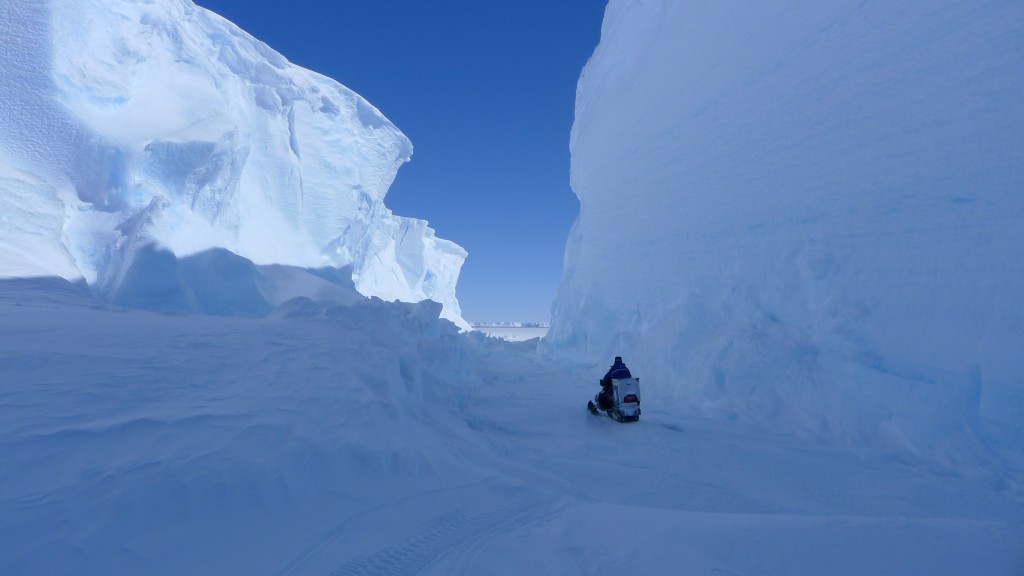
Warmer temperatures, more snow? Belgian International Polar Foundation shot of director and explorer Alain Hubert in the Antarctic.
A story from the opposite pole has also attracted attention. It says climate change is actually increasing the amount of snow in the Antarctic. Puzzling? Not necessarily.
More heat, more snow?
An international study headed by Germany’s Potsdam Institute for Climate Impact research (PIK) comes to the conclusion that every degree of regional warming could increase snowfall there by around five percent. The estimate is based on ice cores and climate modeling.
The information adds a new element to calculations of how much the Antarctic will contribute to global sea level rise. Some people might assume more snow would stop the Antarctic from losing mass. In fact the increasing weight of new snow and ice can make it slide towards the coast and into the ocean faster. In this connection, you might like to read some more stories on these Antarctic issues:
Thicker-ice-in-the-antarctic-good-news-for-the-climate?
Antarctic melt could raise sea levels faster
West Antarctic ice sheet collapse unstoppable
Anders Levermann, one of the new study authors, whom I have spoken to several times on the effects of climate change on the Antarctic and global sea levels, says the latest results back up earlier conclusions that the Antarctic will lose more ice than it will gain and thus have a major influence on global sea level. Levermann, from PIK, is also one of the lead authors of the sea-level chapter of the IPCC report. He stresses that the latest study just provides yet another piece of the “jigsaw puzzle” coming together on how global sea level is likely to develop in the future.
If the world leaders called on to come up with a new world climate agreement at the end of this year need any more motivation, this scientific research from both ends of the world should really give them an extra push.
Arctic thaw – carry on regardless?
When a colleague who has a lot of sympathy for those who do NOT accept that humans are responsible for global warming drew attention to the fact that this had been the hottest June on record, following hard on the hottest May, I must admit I was temporarily put of my guard. Aha, I thought. Is he finally getting the message? Alas, the answer is no. There is a small minority of people that still argues – for whatever reason – that natural variation could be responsible for all this, while acknowledging the record concentration of CO2 in the atmosphere. “And all that stuff”. Hm.
![]() read more
read more
Polar Ice at UN Bonn Climate Talks

… And the ice continues to melt. (Pic: I. Quaile)
The delegates to the UN climate meeting currently taking place here in Bonn are receiving an urgent appeal from polar scientists to cut emissions to slow polar ice melt and give low-lying coastal regions more time to adapt to rising sea levels.
I was very interested to hear about a side-event being held here this evening, at which the authors of this year’s key studies on developments in the Antarctic will be explaining the connections between melting polar ice and climate change impacts like rising seas, affecting regions as diverse as small island states, Bangladesh or Florida in the USA.
I interviewed Anders Levermann from PIK, the Potsdam Institute for Climate Impacts Research and Pam Pearson, Director of ICCI, the International Cryosphere Climate Initiative, both in Bonn for the event.
The ICCI decided to bring the cryosphere into the Bonn talks to sensitize delegates to the dramatic developments in the Antarctic in particular, says Pearson. Ice Blog readers (and I was so delighted to hear Pam herself is one!) will remember posts earlier this year on melting in the East and West Antarctic. I also covered these in articles for DW. The shocking thing is that the Antarctic, even East Antarctica, which was until relatively recently considered so cold it had to be safe from global warming, is already being affected by climate change. The papers on the West Antarctic even described the melt trend as “irreversible”.
“We have entered an era of irreversible climate change”.
Today, Anders Levermann, author of the East Antarctic paper and one of the world’s leading Antarctic researchers, told me “we have entered a new era of climate change, witnessed the tipping of the West Antarctic ice sheet, and this is irreversible”.
That should really shock people into action, you would think. But climate negotiations are moving, as one of the experts said to me at the meeting “at a glacial pace”. As we can see in Antarctica, though, and Greenland and other regions, those glaciers are speeding up. Maybe there is hope for the climate talks yet!
The announcements by the USA and China on possible emissions cuts have brought a new “buzz” to the Bonn conference. The fact that the key emitters could finally be getting the message and preparing to move, with the impacts of climate change hitting their own countries, has to be a positive signal. Pearson confirmed to me that people in the sunshine state of Florida, where she lives, had become more aware of the importance of melting ice caps with increasing floods and storms.
As Levermann says, Antarctica and Greenland have a huge potential to raise sea level further than previously anticipated. He was lead author on the IPCC report chapter on sea level rise. The latest IPCC report factored in some of the likely impacts from melting ice in these regions for the first time. Of course the latest research was not yet included. For the 21st century forecast, this will not make a lot of difference, says Levermann. But the fact that this irreversible Antarctic melt is now underway will make a big difference to coming generations.
There are those who dispute whether the warming of the ocean, which is causing the Antarctic melt (unlike the surface melt on Greenland) is man-made. Levermann does not rule out natural variation as a possible influence. But ultimately, he says, that is irrelevant. Greenhouse gas emissions and so human interference are warming the planet, and any further warming, whatever the cause, will speed up ice melt. So cutting emissions is the way to slow it down and, Pearson adds, gives people time to adapt to rising seas.
The combination of models based on the principles of physics, using a higher resolution than ever before, and evidence from ice cores showing what happened in the past, make for a high degree of certainty about these ice developments, says Levermann.
“The level of warming will determine the rate with which we discharge West Antarctica, and we can still prevent the tipping of East Antarctica”, the cryosphere experts told us here in Bonn.
That is a huge responsibility. Here’s hoping the message will make it into the hearts and minds of those negotiating the future of the earth’s climate and the governments they represent.
Will Antarctic share Arctic’s fate?
While the Arctic is melting twice as fast as the rest of the planet, and protests continue against the race for oil at huge risk to the sensitive environment, the icy regions around the south pole were long considered immune to climate change. But melting glaciers on the Antarctic Peninsula in recent years sparked doubts in the scientific community about just how stable the western region of Antarctica really is. Earlier this year, I wrote an article on the irreversible melt of the Pine Island glacier on western Antarctica. The huge iceberg that broke off last November has been in the news again, heading for the open sea.
Only the huge icy vastness of Eastern Antarctica still appeared to be safe from the perils of a warming climate. Now experts from Germany’s Potsdam Institute for Climate Impact Research (PIK) have published findings indicating that this too might no longer be the case. In a study published in “Nature Climate Change“, they write that the melting of just a small volume of ice on the East Antarctic coast could ultimately trigger a discharge of ice into the ocean which would result in unstoppable sea-level rise. They are talking about tomorrow or the next decade. Still, the prospect of more irreversible thawing in the Antarctic is a very worrying one.
“Previously, only the West Antarctic was thought to be unstable. Now we know that the eastern region, which is ten times bigger, could also be at risk”, says Anders Levermann, co-author of the study. The findings are based on computer simulations which make use of new, improved data from the ground beneath the ice sheet.PIK scientist Levermann was one of the lead authors of the sea-level section in the latest IPCC report.
“The Wilkes Basin in East Antarctic is like a bottle that is tilted”, says Matthias Mengel, lead author of the new study.”If you take out the cork, the contents will spill out”. At the moment, the “cork” is formed by a rim of ice at the coast. If that were to melt, the huge quantities of ice it holds back could shift and flow into the ocean, raising sea levels by three to four meters. Although air temperatures over Antarctica are still very low, warmer ocean currents could cause the ice along the coast to melt.
So far, there are no signs of warmer water of this sort heading for the Wilkes Basin. Some simulations suggest though that the conditions necessary for the “cork” to melt could arise within the next 200 years. Even then, the scientists say it would take around 2000 years for sea level to rise by one meter.
According to the simulations, it would take 5,000 to 10,000 years for all the ice in the affected region to melt completely. “But once this has started, the discharge will continue non-stop until the whole basin is empty”, says Mengel. “This is the basic problem here. By continuing to emit more and more greenhouse gases, we could well be triggering reactions today that we will not be able to stop in the future. ” Indeed.
The IPCC report predicts a global sea-level rise of up to 16 centimeters this century. As this could already have devastating impacts on many coastal areas around the globe, any additional factor is of key importance to the calculations. “We have presumably overestimated the stability of East Antarctica”, says Levermann. Even the slightest further increase in sea level could aggravate flooding risks for coastal cities like New York, Tokyo or Mumbai.
At the moment, the largest contribution to Antarctic ice loss and rising sea levels comes from the Pine-Island glacier in West Antarctica. As I mentioned at the start, a huge iceberg, which broke off from the glacier last year, is currently floating into the open waters of the Southern Ocean. French glaciologist Gael Durand from Grenoble University told me in an interview the huge glacier had already reached a point where its continued melting is irreversible, regardless of air temperature or ocean conditions.



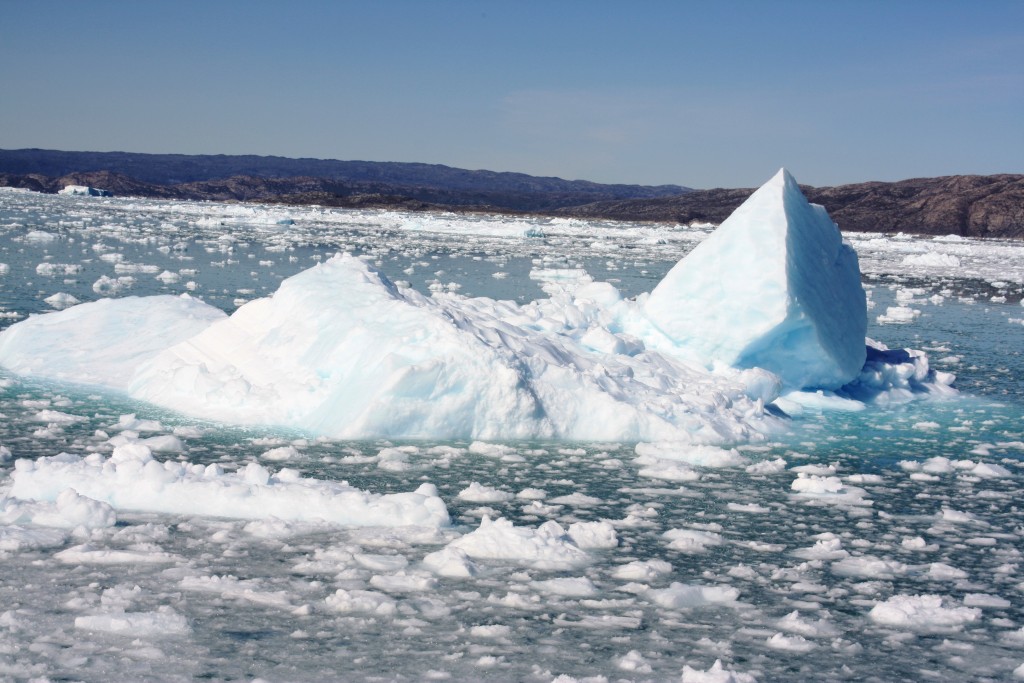
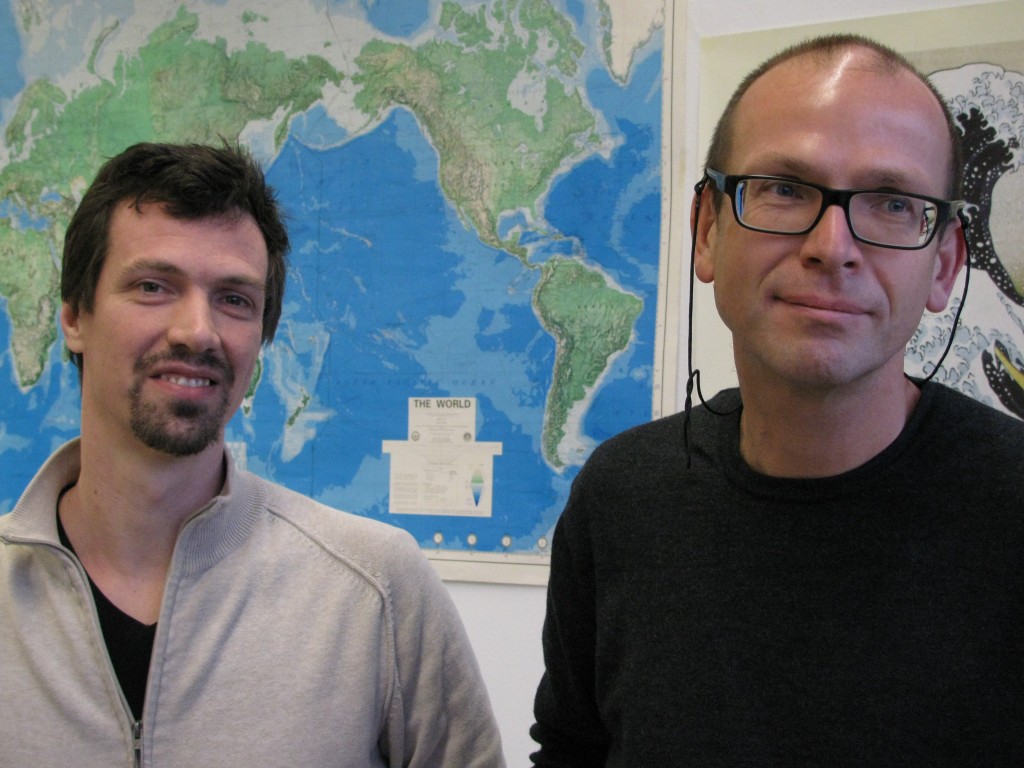
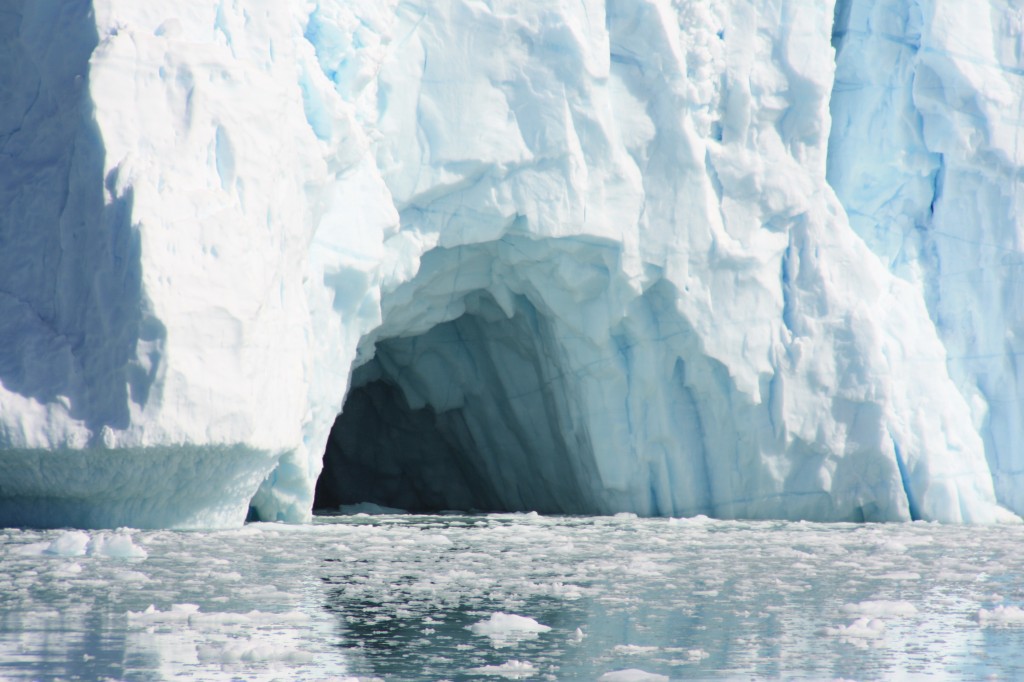

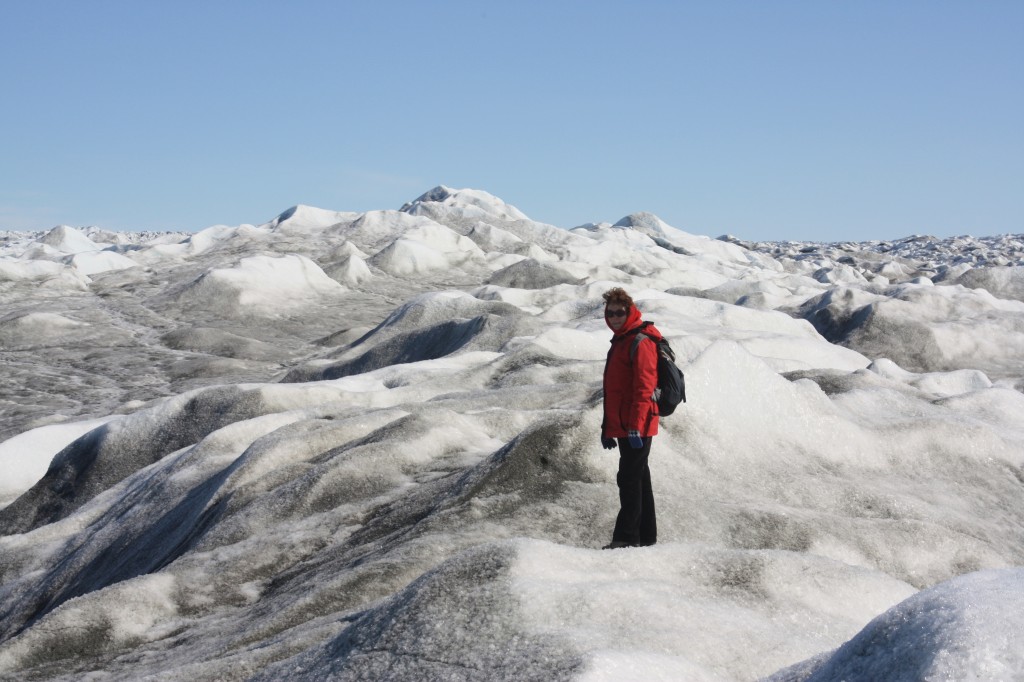


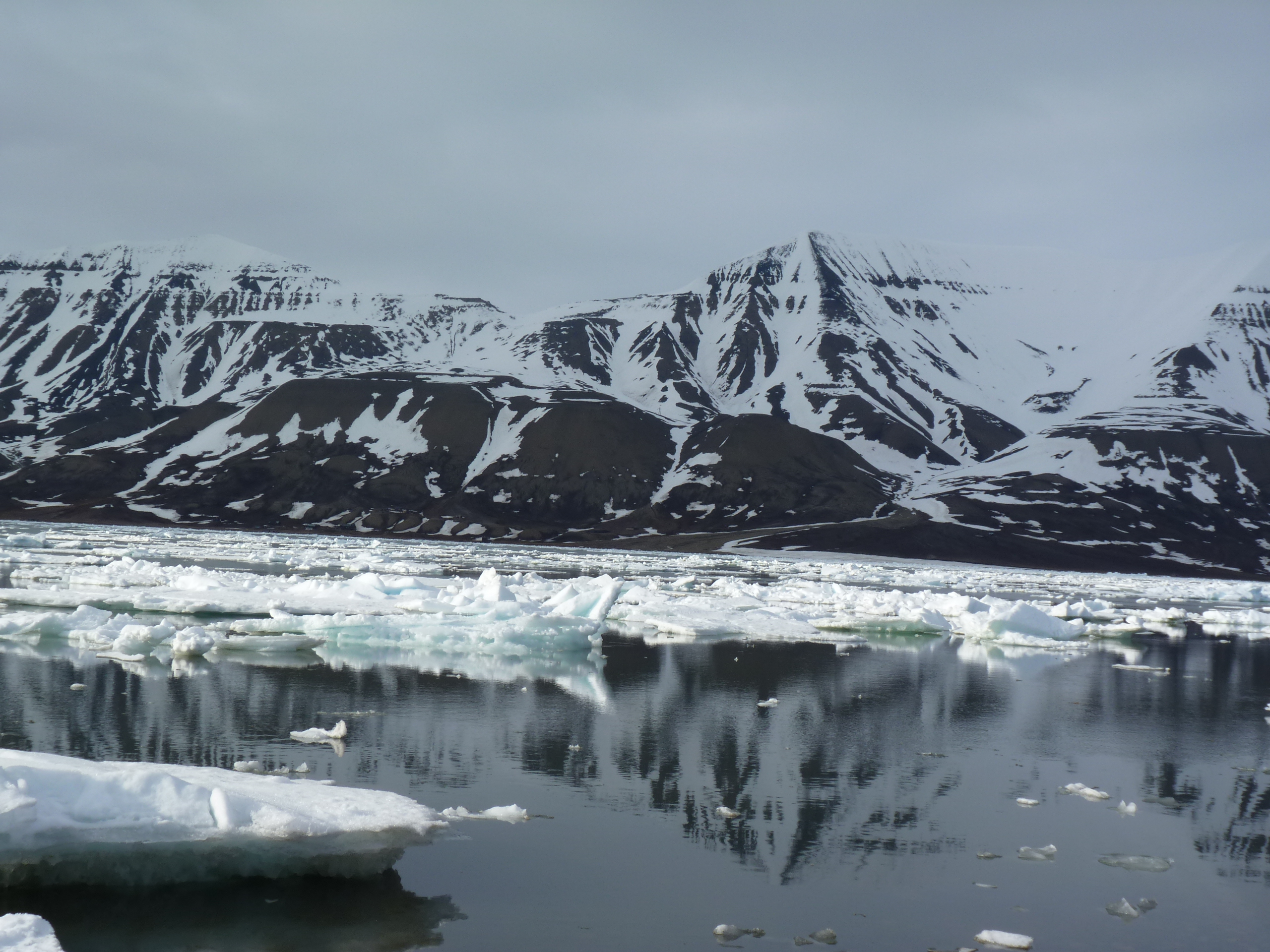













Feedback